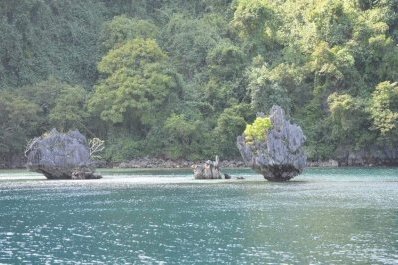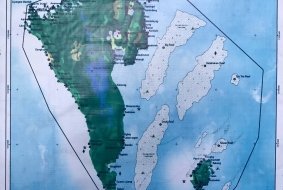Philippines
Coron Island Natural Biotic Area
Site Info
Official Information
- Full Name
- Coron Island Natural Biotic Area (ID: 5035)
- Country
- Philippines
- Status
-
On tentative list 2006
Site history
History of Coron Island Natural Biotic Area
- 2006: Added to Tentative List
- Added to tentative list
- Type
- Mixed
- Criteria
Links
- UNESCO
- whc.unesco.org
All Links
UNESCO.org
- whc.unesco.org — whc.unesco.org
Community Information
- Community Category
- Wildlife habitat: Fauna
- Natural landscape: Karst landscapes and caves
- Cultural Landscape: Continuing
Travel Information
Recent Connections
News
No news.
Community Reviews
Show full reviews
Coron is a haven. Seriously, it's got the scenic beauty, biodiversity, traditional culture, and the prices and atmosphere of a Philippine provincial town. Coron Island, the center of all the greatness of this place, can be reached by the many day tours offered by the even more numerous pumpboats at the pier of Coron town proper. Tours go to the island itself, as well as marine areas around the island and further outlying islands. Sites visited within the property include Kayangan Lake, Twin Lagoon, and Coral Garden among others. Lunch is usually done on one of the beaches of the island, nestled in the middle of walls of jagged limestone. I visited Coron back in October 2013, and I definitely want to go back. We took 3 different day tours via pumpboat to Coron Island, its surroundings, and some outlying islands like the Bulog sandbar, and each day was a day in paradise.
Coron is one of the most spectacular coastal/insular limestone areas in the world. While Ha Long may have more numerous islets and caves, Coron has lakes, lagoons, and rich pristine marine and land ecosystems. Kayangan Lake is definitely the highlight of the beauty of Coron. Climbing up from the shore, one would come across the best, most iconic view of the trip, looking back down towards the lagoons and sheer limestone cliffs of the island. After a steep trek down through the forest, we came to the beautiful green-tinged lake itself, surrounded by more limestone cliffs. …
Keep reading 0 comments
The property is currently the Philippines' only mixed cultural and natural site in the tentative list, and one that has most potential for inscription.
On surface level, most tourists would be quick to compare Coron with El Nido (another property in the tentative list) in terms of natural landscape, beauty and biodiverity. Hence, there is a need to promote how the culture of the Calamian Tagbanuas - the indigenous group living in Coron - is intimately intertwined with landscape and seascape management of the island, its surrounding reefs and islets. See uploaded photo describing the vast expanse of the property.
Management-wise, the whole Coron has been declared an ancestral domain for the Tagbanuas, making them able to assert their traditional rights and continue their traditional fishing practices. Many of the areas in Coron are classified as strict protection zones, off-limits to tourists, as they are considered sacred fish sanctuaries for the Tagbanua.
Keep reading 0 comments